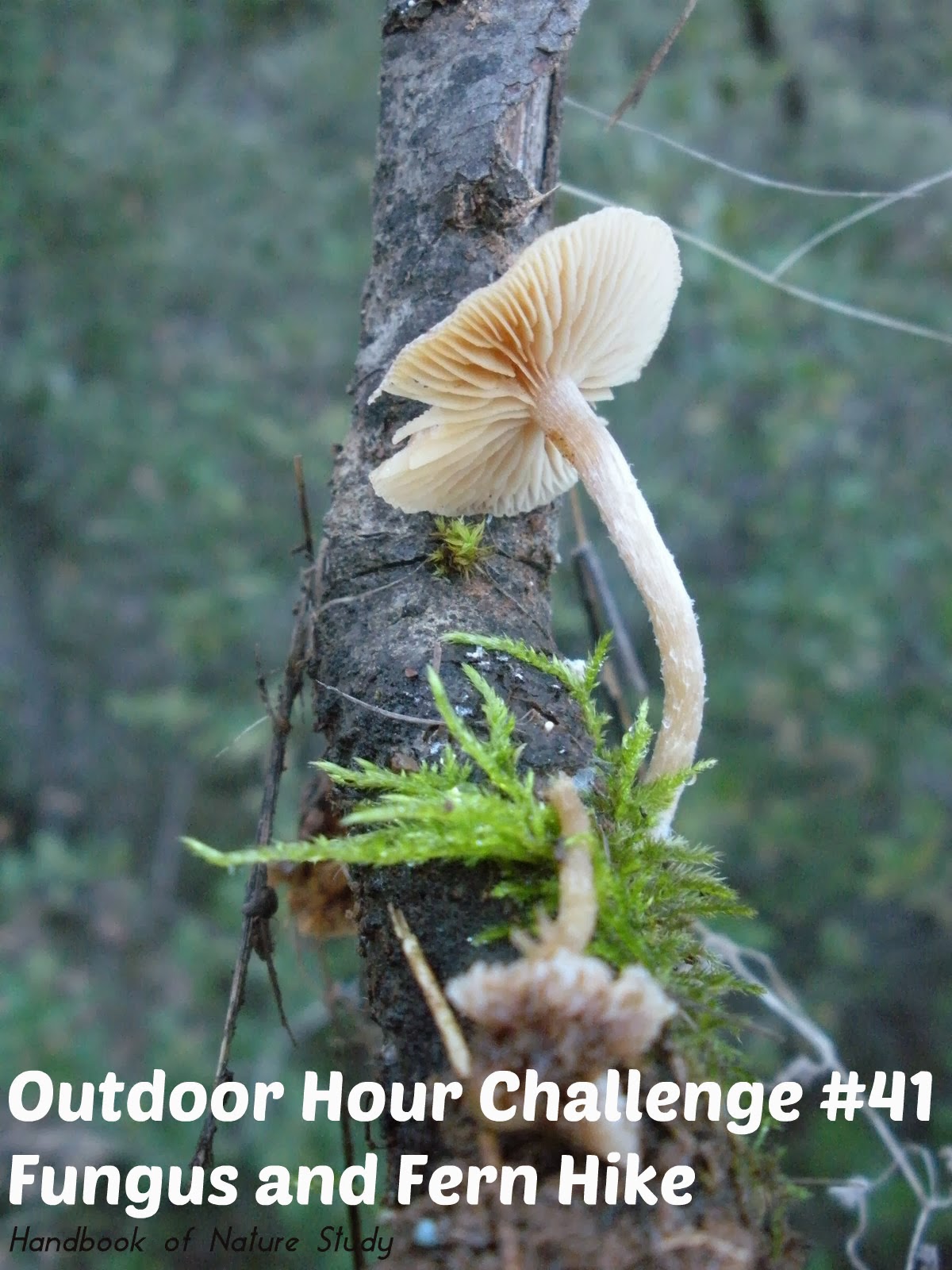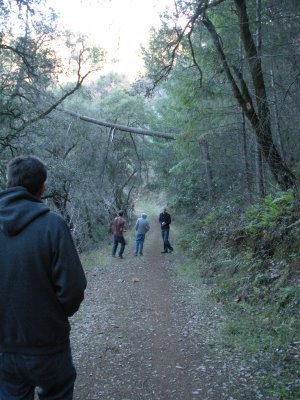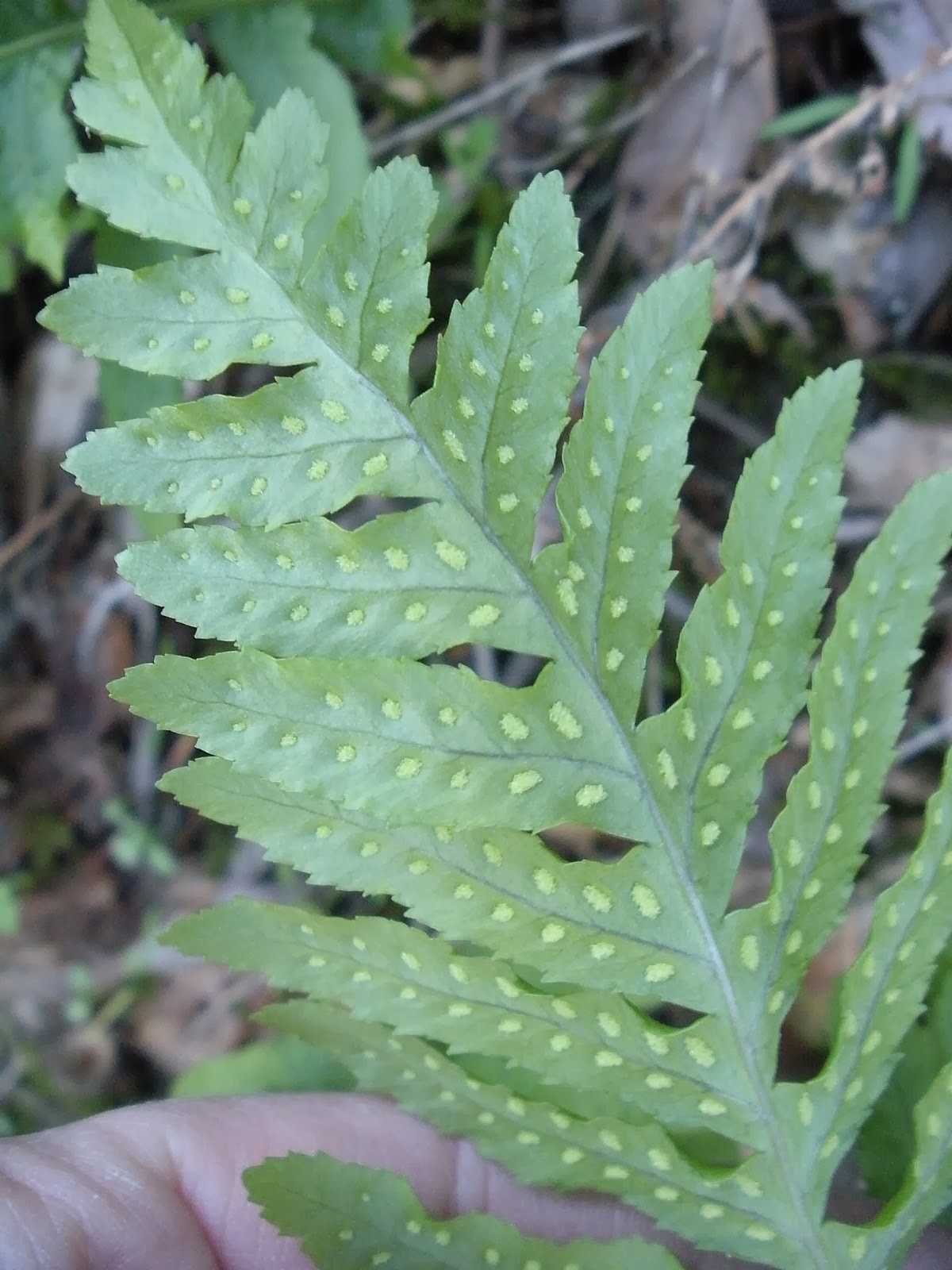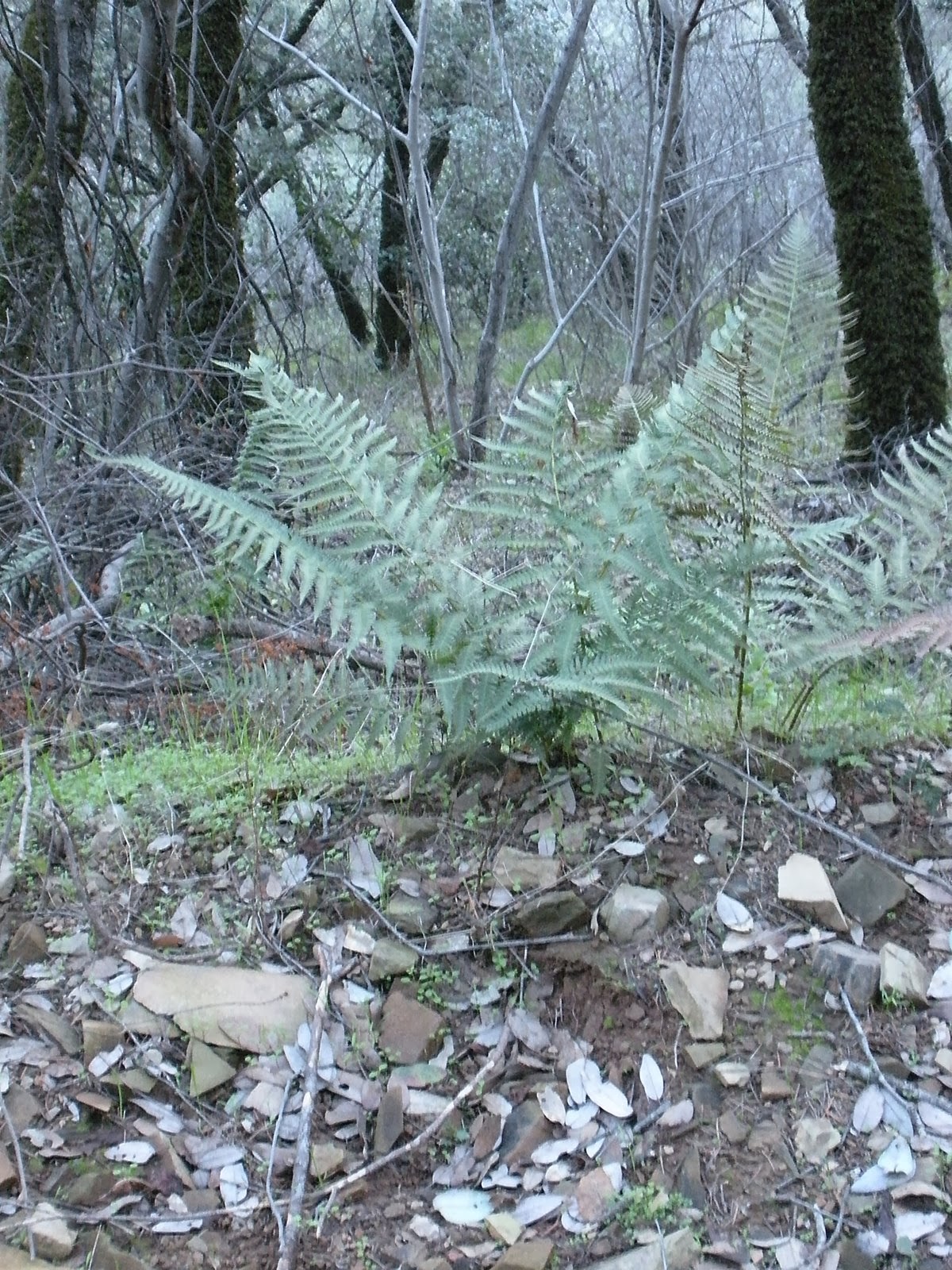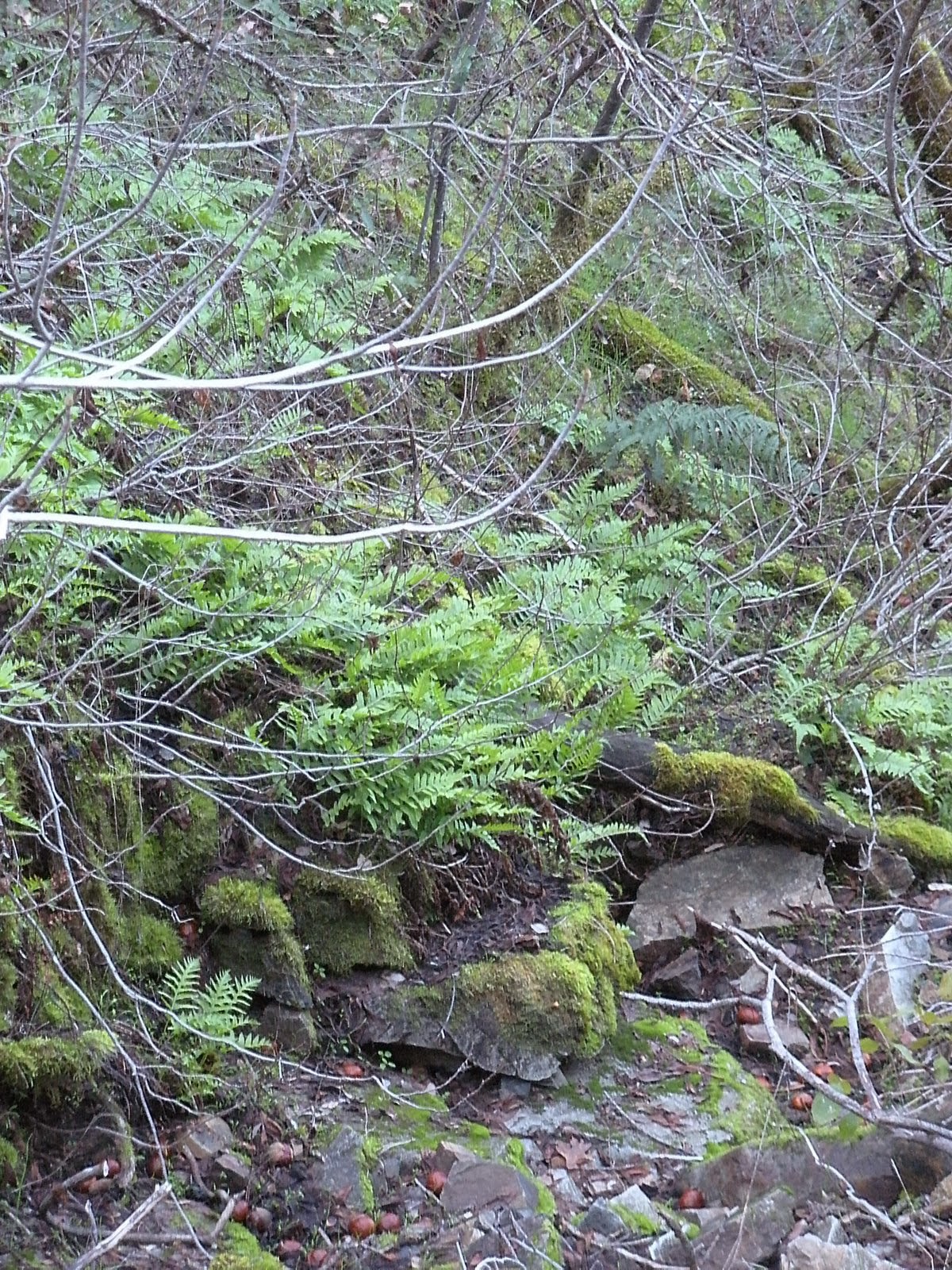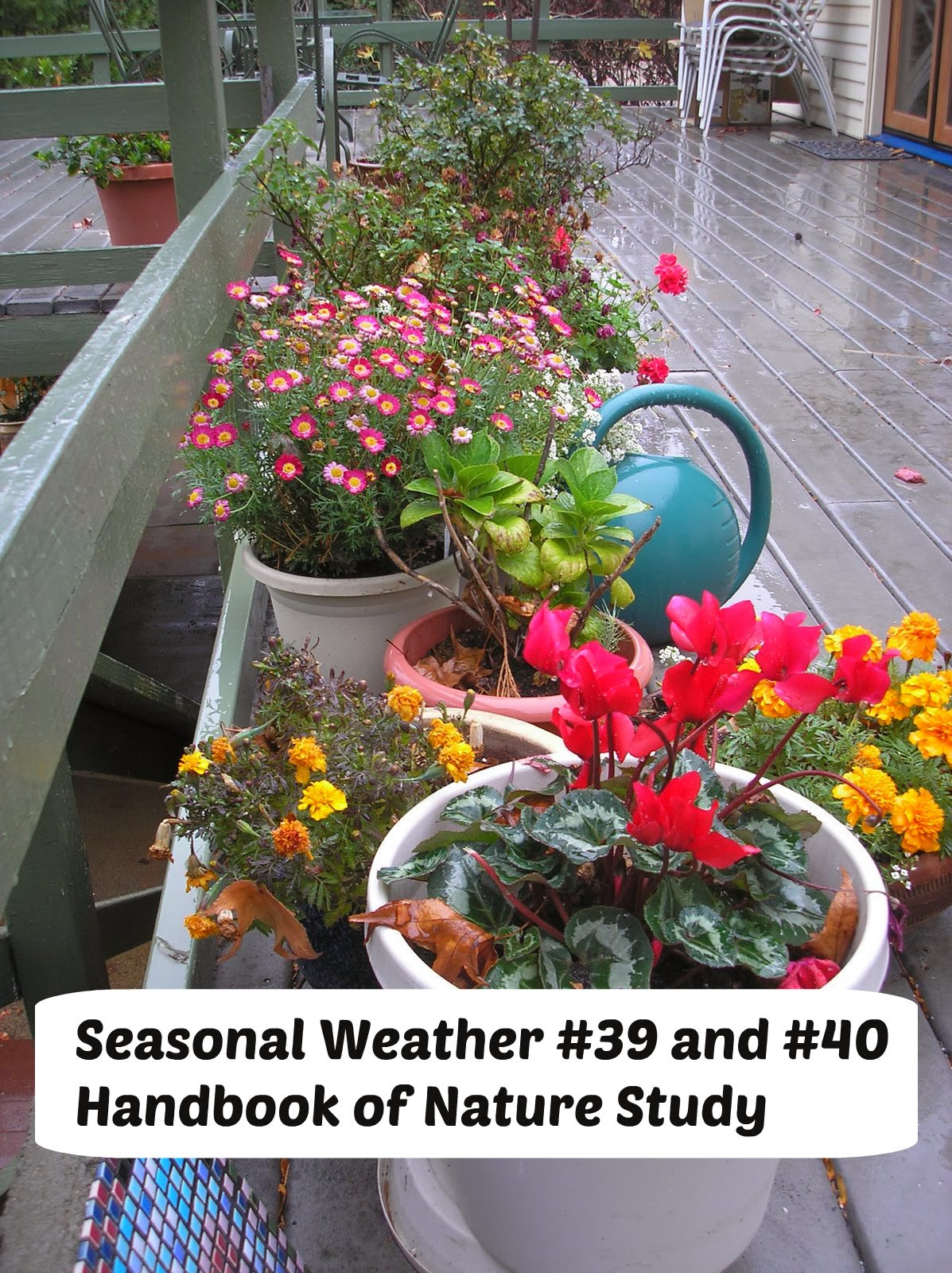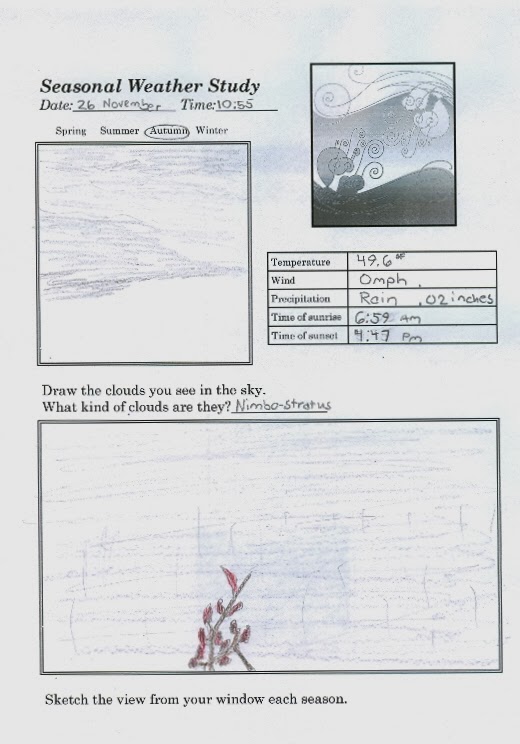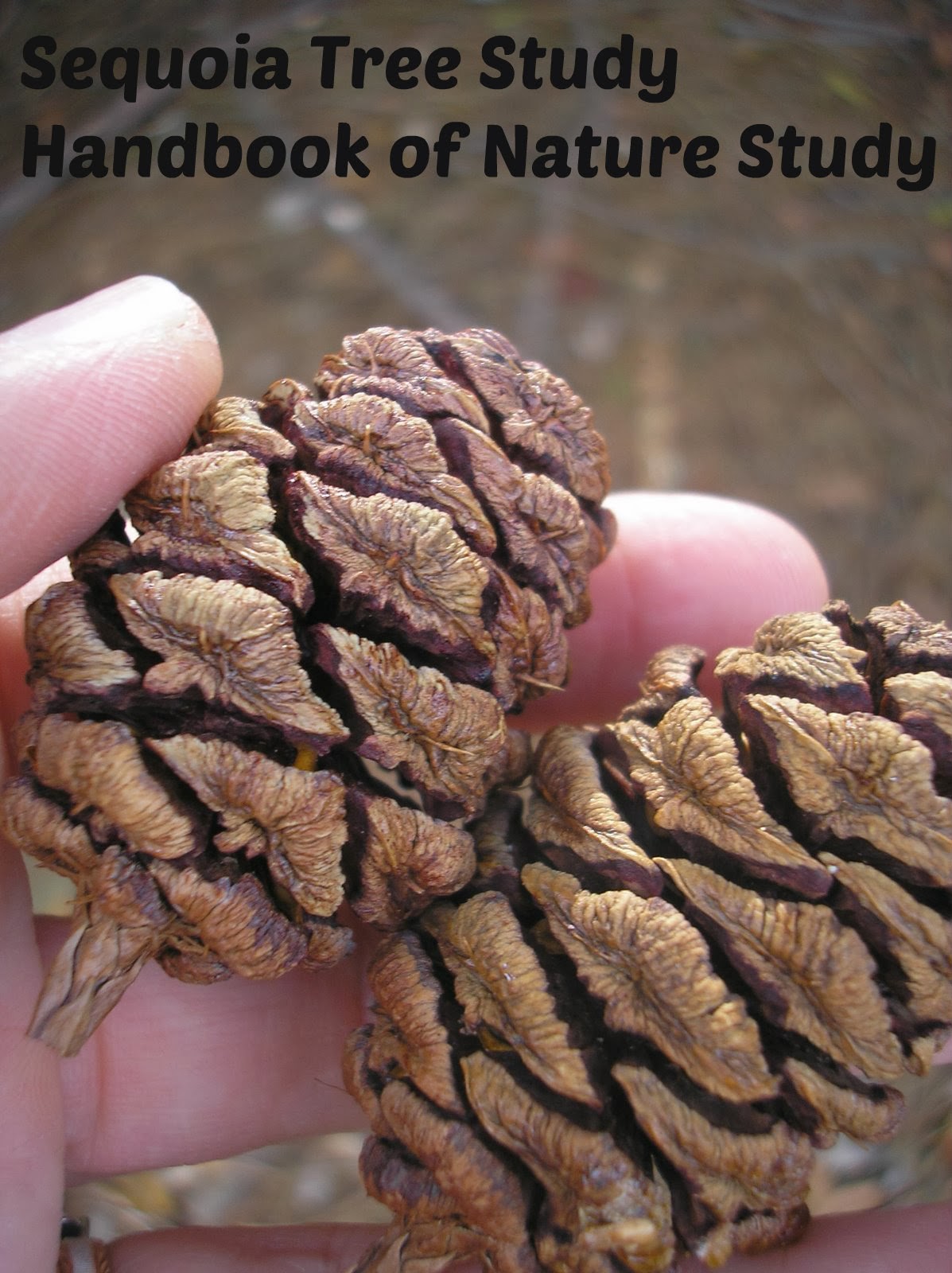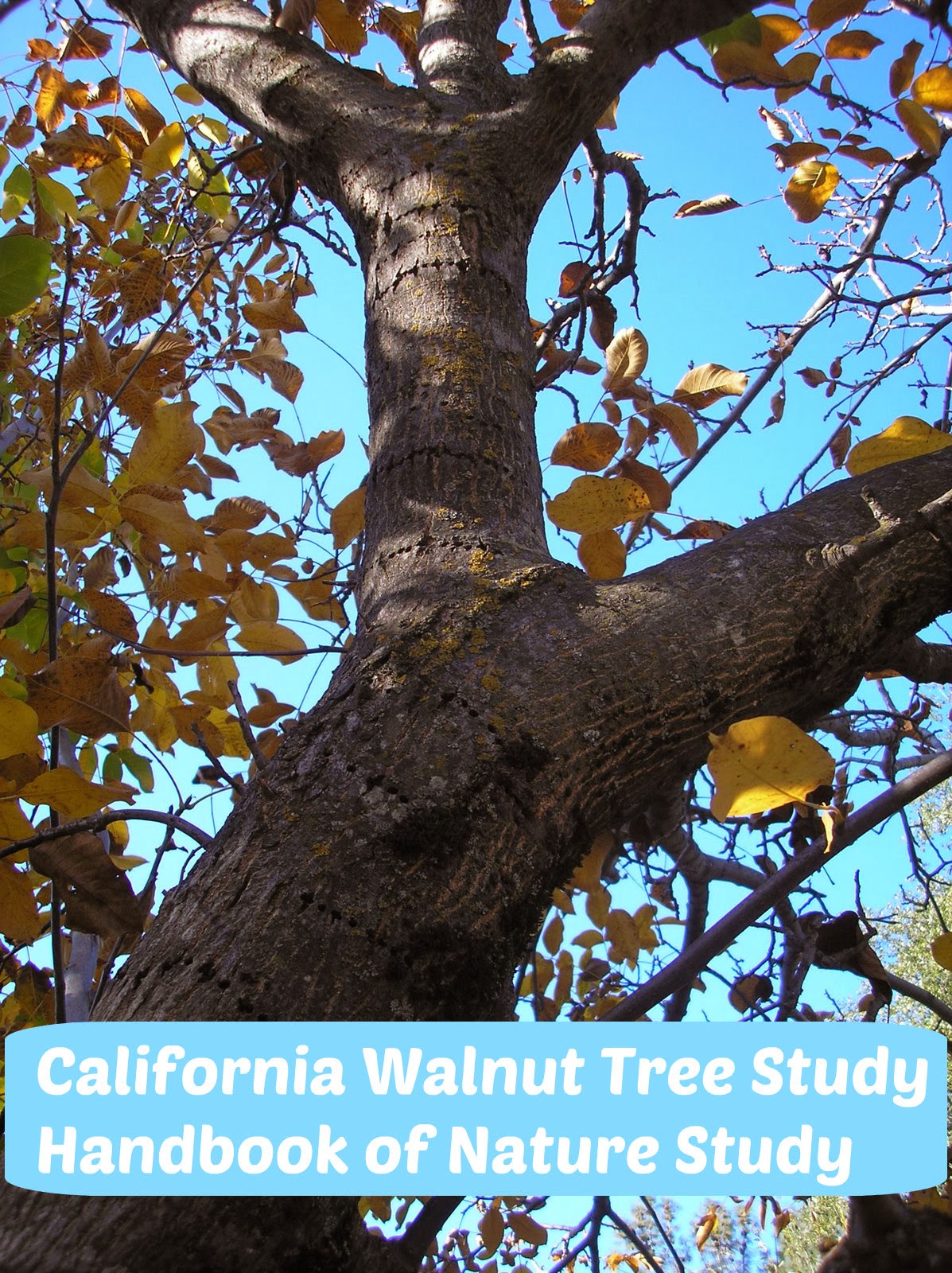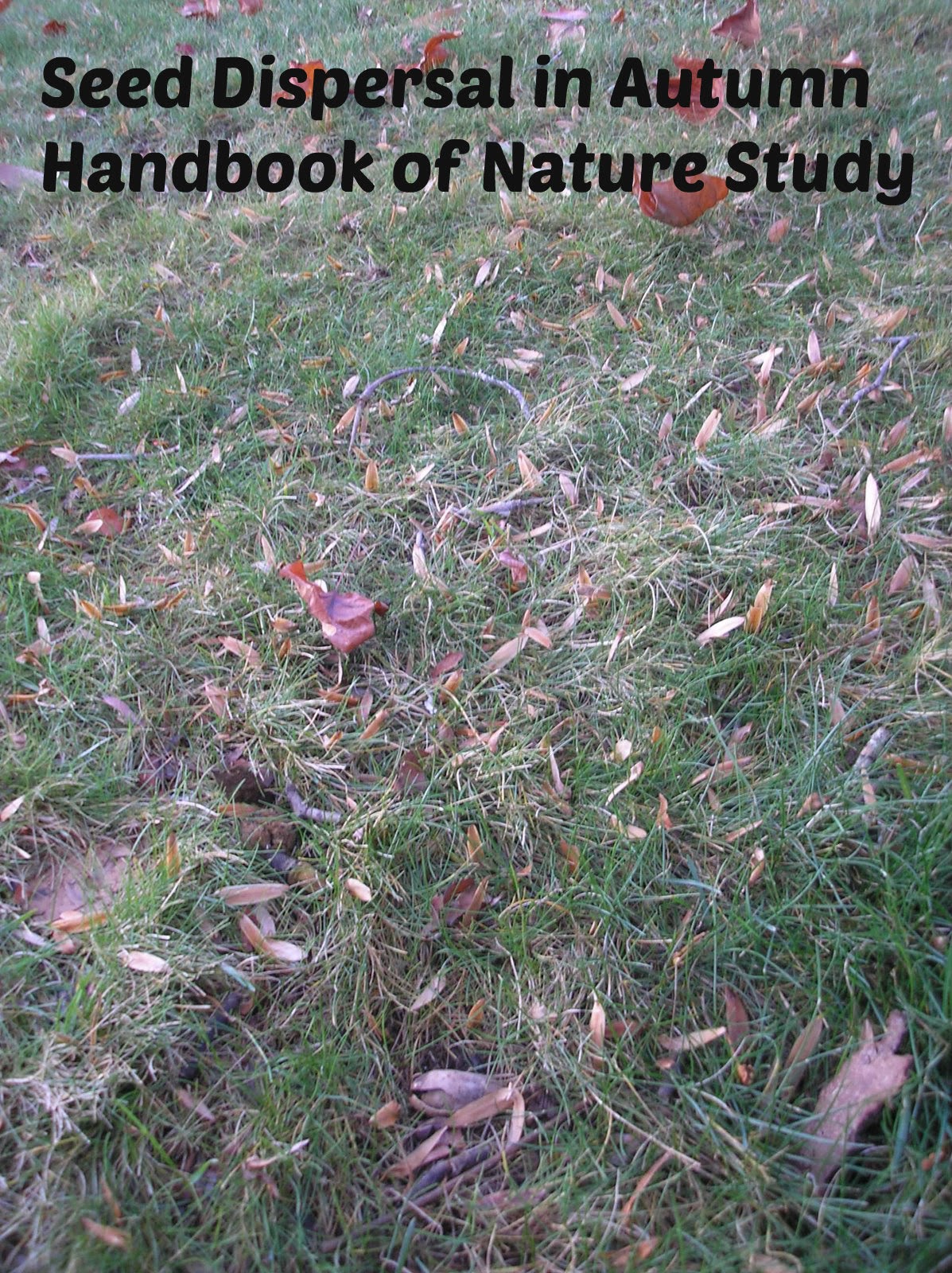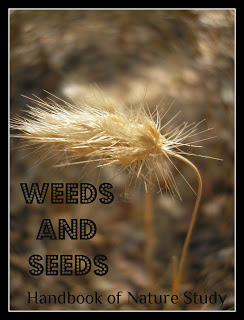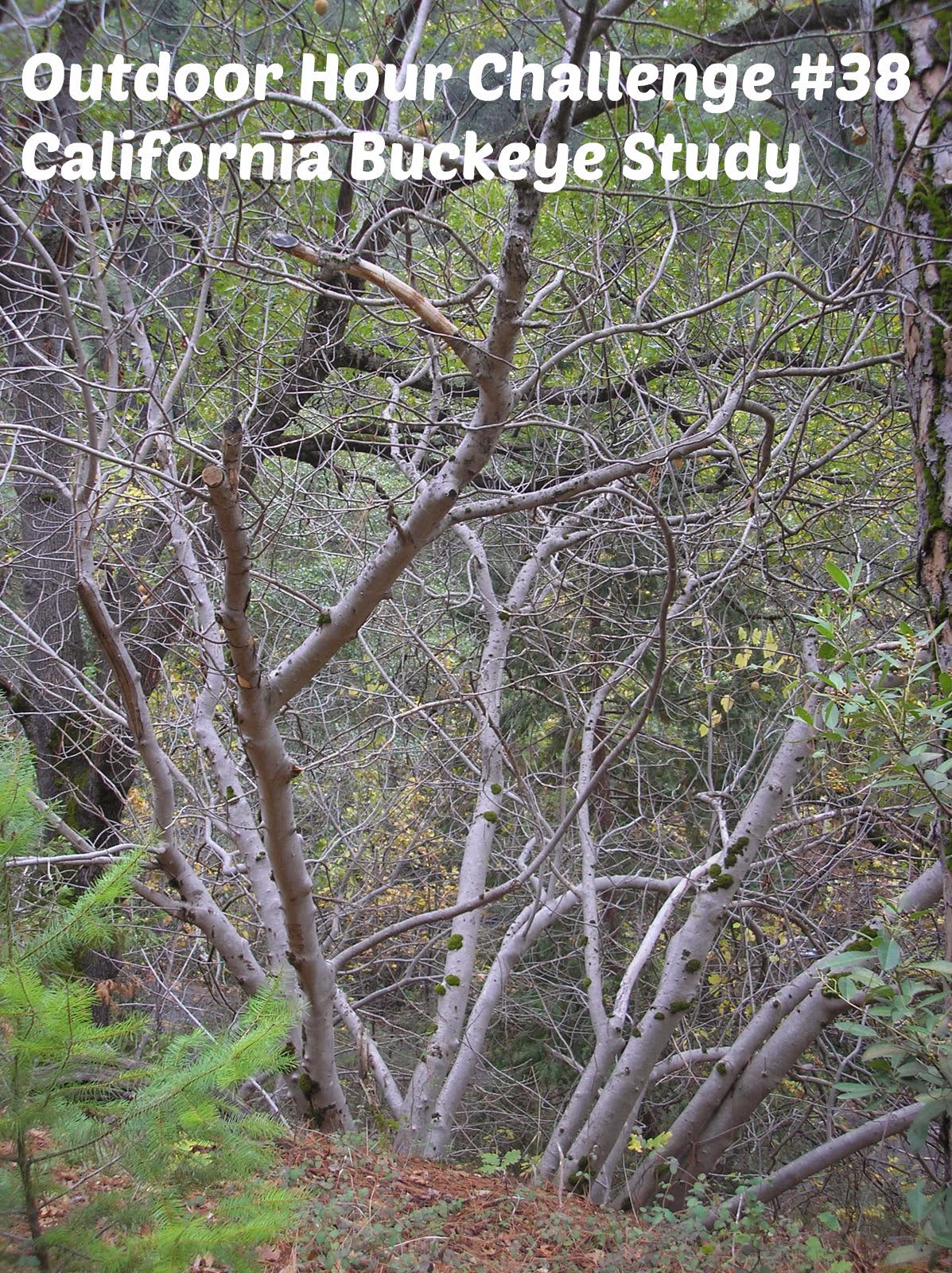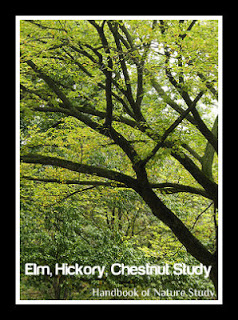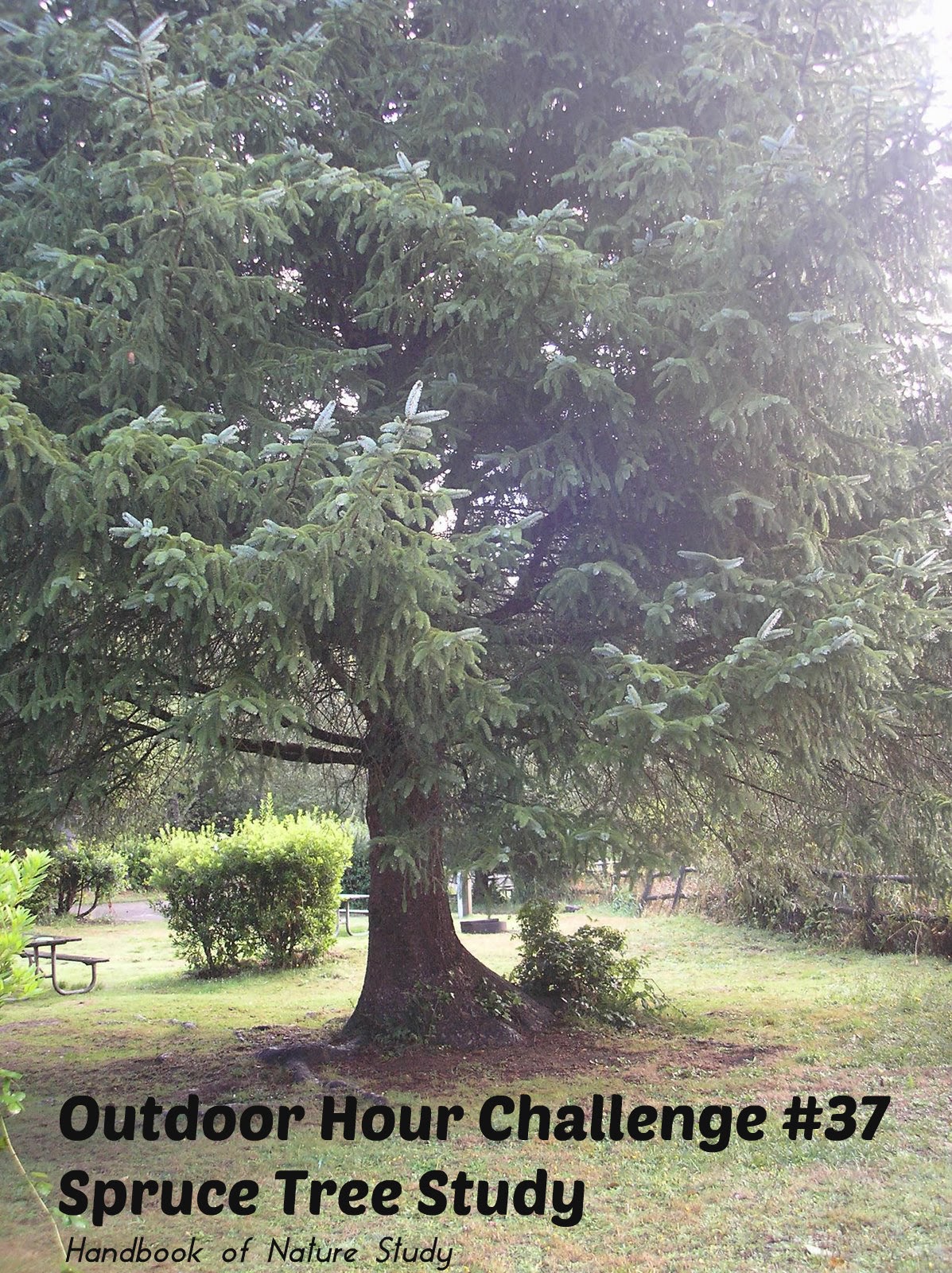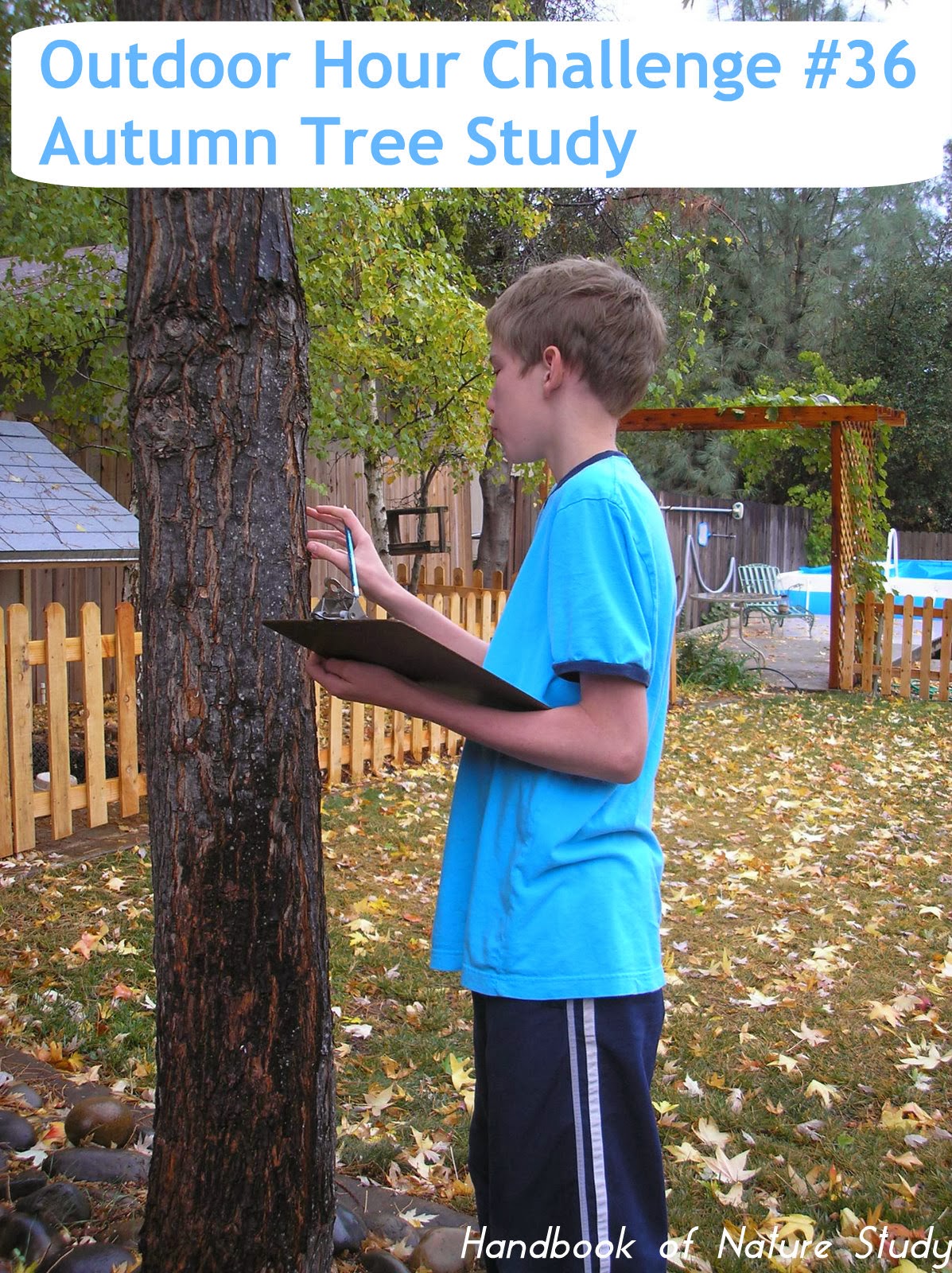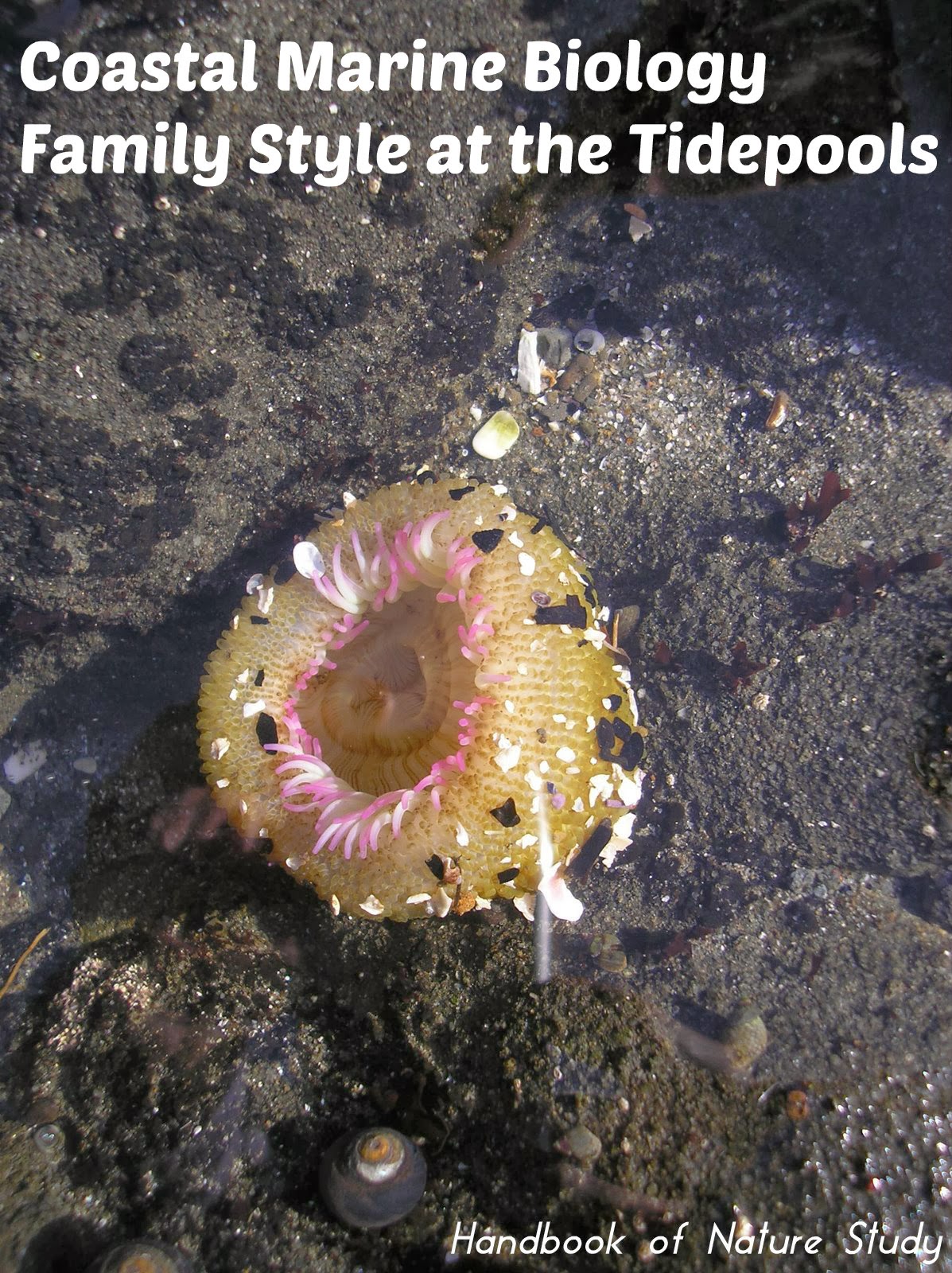In our part of the world it is the perfect time to be looking for and observing closely the mosses and lichens in our yard. Last week I posted an entry sharing one of our favorite local hikes that has literally come alive with mosses.
After reading the Handbook of Nature Study, we were on the lookout for some haircap moss. I looked it up in our field guide and it showed that we have it here in California so we were determined to find some to look at in person.
Last week on our hike we noticed the “little parts that stick up” and those are actually the spore capsules as shown in the diagram on page 710. Here is a photo of them as well.
This is a close-up of the moss and lichen we saw growing on so many of the trees. In the top photo of this blog entry, you can see how it grows all the way up the tree trunks in this part of the forest. The greens of the mosses and ferns really show up in the forest as you walk along at this time of year when most of the green leaves have fallen from the deciduous trees.
We found some fungus growing on this fallen tree branch…new to us.
It had such a vivid color and look at the green growing on the branch as well….not sure what it is but it is pretty.
Then as we looked closely, we saw this part of a wasp’s nest on the ground right next to us. It was very delicate and soft.
We found this pretty fern growing all along the trail’s edge on the little embankment. It has a black stem and pretty bright green leaves. I think it is a California Maidenhair fern. I realize now that there are really three different kinds of ferns in the photo…I’m not sure what kind they are but I will update when I find out.
Can you tell we have enjoyed our week of exploring and looking for moss and lichen? We have been out three times on the trail and each time we have found something new to learn about. No nature journals this week yet but I am hoping to add at least an entry showing the parts of the haircap moss or something showing the life cycle. I know that we covered this in biology last year but I want to make it more real for the boys by viewing these things in real life and then making a nature journal entry to show what we learned.








